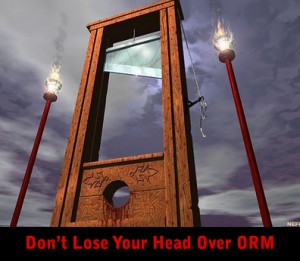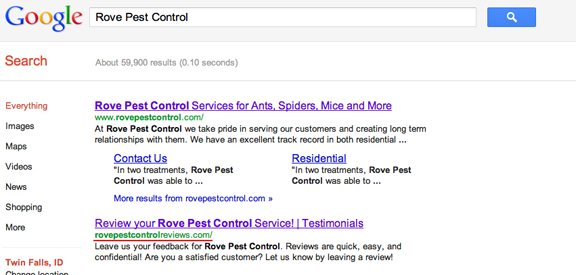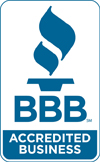
 Wikipedia’s definition of a microsite describes it as a 1-7 page site that likely has its own domain name…. etc, etc. you get the idea. A small site for a specific purpose. But why not just make a page or few pages on the main site that has the same information. Often, online reputation management topics are better addressed in a separate, focused domain. Let’s look at some reasons for building a microsite for online reputation management.
Wikipedia’s definition of a microsite describes it as a 1-7 page site that likely has its own domain name…. etc, etc. you get the idea. A small site for a specific purpose. But why not just make a page or few pages on the main site that has the same information. Often, online reputation management topics are better addressed in a separate, focused domain. Let’s look at some reasons for building a microsite for online reputation management.
1. Controlling SERP Space That Is Keyword Rich And Branded
The more SERP space you control the better but by adding keywords to the company name such as review, testimonials or complaints, etc., along with optimization, the site will likely rank for these terms. The beauty of this is it is usually fairly easy to rank quickly for branded searches like these. There is some debate about how effective exact match domains actually are and I definitely don’t think it is anywhere effective as it was in the past but I doubt it hurts. Especially when there are title tags & keywords on the site that fall in line with the url. I would guess that Google’s algorithm is sophisticated enough to see when a site’s content doesn’t fall in line at all with the url but when it does, it very well may pull a fair amount of extra weigh. I believe we have a while before it doesn’t pull any.
2. To Address Potential Customers Concerns In The Light Of Your Choice.
Not only is it good to have additional ranking domains in the SERP space, but you also get to build ownership of the terms you are targeting. By optimizing pages and controlling a ranking result for a term like “CompanyNameReviews” or “CompanyNameComplaints” you get to be the one addressing the topic however you like. This is likely a better option than leaving it only to Google Places, Yelp, and other review sites to show their sometimes questionable results and possibly even filter out some of the positive reviews. The point is, you have control over the site.
3. It’s a Place To Answer Questions
If potential customers are in the research phase & at this point, they may be more likely to look at a site that isn’t obvious to be the company website. At a glance, a domain with “reviews” or “complaints” may not appear to be a product of the company at all but rather another review or rant site. This is fine because when the potential customer clicks through a site that addresses concerns in a positive light, the fear may very well be diffused from that point on. I know I have been in very similar situations where I am looking to see what people are saying about a company, find something that appears to be negative but ends up being positive, and for some reason from there on out, concerns dissipate.
4. Own Up to Negatives & Keep It Separate.
If there is a nagging concern your customers keep complaining about, obviously, address it. It may be better to do this in a separate place than the regular company site. After you have provided a permanent solution to the problem, let your customers know that you heard their voice and have acted on it. Sincere honesty and integrity can go a long way. Separating this from the main company site allows you to address it in a spot that is less likely to be viewed by someone that is already sold on the brand. The last thing you want to do is bring something somewhat negative to light (even though you are making amends) that a “sold” customer didn’t really need to see.
5. It’s A Focal Point For Getting Reviews
There’s a couple ways you can go about this on a Micro-Site. You can set up a form right on the site to collect reviews from customers if you feel like you may need to monitor them for a while. Once your customer service quality goes up, move on to the next method. Start directing customers to all your review sources you have out there You do have claimed review sources…right? Don’t just use the power of SEO to your ORM advantage by making the bad reviews “take a dirt nap”. Use it to give yourself an edge yes, but also to help you provide legitimately better customer service. Listen to what the customers are trying to tell you.
Additional Tips to help you “Microsite” like a champ.
Markup hReview
Put hReview in the sidebar & make sure it displays on every page. Also markup a review on the home page of the site. It seems to be open season on hRevew showing up in the SERPs so bag yourself some stars. If you think this is not worth doing unless you are Amazon or Best Buy, think again. I have seen on more than one occasion small sites getting review stars in the SERPs by implementing this method. No joke. Mark them up on the review page also. If you are using WordPress, a great plug-in that pretty much does the heavy lifting for you is: hReview Support for Editor by Andrew Scott.
Prominently Display Trust Emblems
If your business or the business you represent has BBB accreditation, display it. If they have a Satisfaction Guaranteed policy badge display it. If they go by this policy but don’t have some kind of badge to show, make one. If they have positive reviews a nd/or a favorable BBB rating you might display those too. Wherever they have good reviews floating around out “in the wild” bag ’em & tag ’em. That is, mark them up and display them. Link back to the source with a recognizable logo for easy access for visitors to see the review is not fabricated. Don’t forget about promotions. Link back to your company site with promotions on the microsite. If someone clicks on a promotion, it is a fine time to link back to the company site at this point because you have likely addressed any lingering concerns they may have had.
nd/or a favorable BBB rating you might display those too. Wherever they have good reviews floating around out “in the wild” bag ’em & tag ’em. That is, mark them up and display them. Link back to the source with a recognizable logo for easy access for visitors to see the review is not fabricated. Don’t forget about promotions. Link back to your company site with promotions on the microsite. If someone clicks on a promotion, it is a fine time to link back to the company site at this point because you have likely addressed any lingering concerns they may have had.
 Ryan Amen is a SEO/ORM Account Manager at Nifty Marketing. When he is not spending time with his amazing wife & 3 children, you can likely find him practicing/learning SEO & marketing.
Ryan Amen is a SEO/ORM Account Manager at Nifty Marketing. When he is not spending time with his amazing wife & 3 children, you can likely find him practicing/learning SEO & marketing.